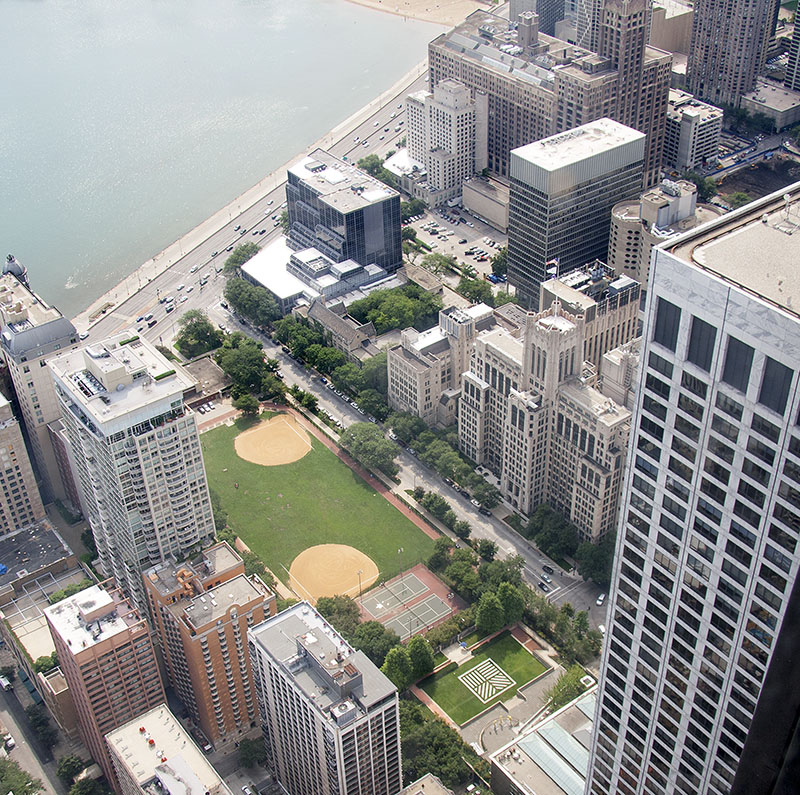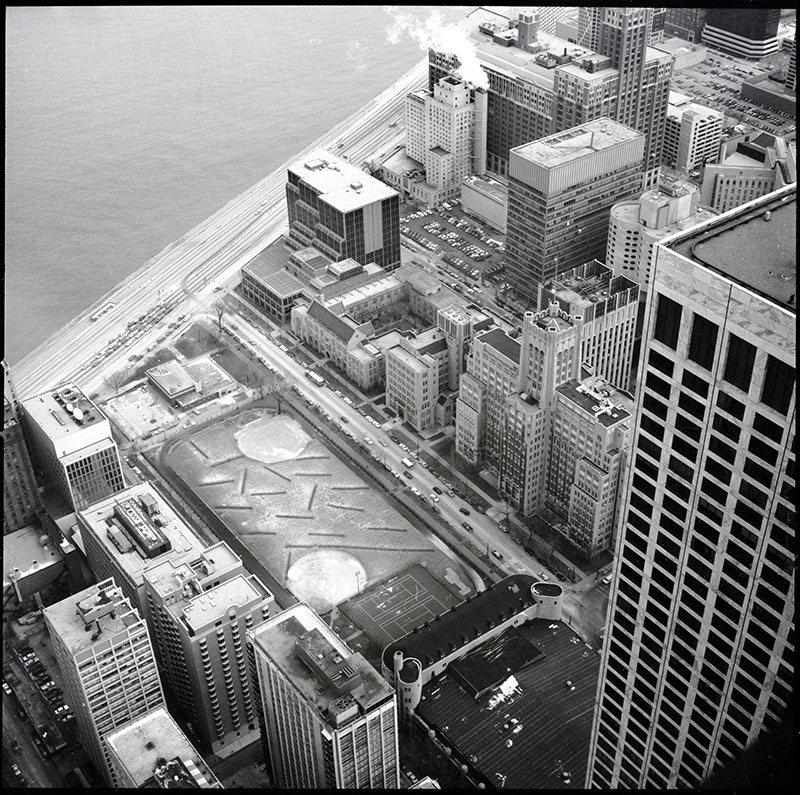During the period of negotiating the terms for the armory site, Allen Turner was on the board of trustees. In 1991 he became its chair and also the chair of the architect selection committee. I recorded a conversation with Turner as part of this project. Hear a clip of that conversation where he explains how the MCA acquired the site: See the museums promotional videos in the left tab for a compelling presentation of the period and the museum's achievement. The Museum of Contemporary Art secured the Armory site through creative and fortuitous real estate transactions. In December 1987, a family relation of one of the MCA's trustees was instrumental in the donation of the R.R. Donnelley Corporation's vacant plant on Chicago's near south side. Museum officials were able to swap that 140,000 square foot building to the Illinois National Guard in exchange for their dated armory quarters. The armory building had recently been appraised and was deemed worthless in relation to all the needed upgrading and repairs. This was not the first time a creative land swap landed a building on Block 21; the armory itself had landed there in a similar negotiation. Before securing the armory site for their new museum, other locatoins were considered. The most serious deal was one that would have put the MCA across the street from today's Millenium Park in the Chicago Cultural Center. In the summer of 1989 Mayor Daley offered the contemporary art museum the 1897 structure, and it was seriously considered as mutually beneficial. Museum officials even priced out the cost of internal renovation: $30 million. In a dissenting Tribune article that reflected a simplistic view of contemporary art, John McCarron wrote, "Not everyone is enthralled with the idea of handing over the Cultural Center, restored 12 years ago at a cost of $35 million, to a group that charges $4 to look at pictures of fists shoved in the mouths of fish." On December, 20, 1989, under the headline, "Museum rejects Daley's offer: Trustees favor armory site as contemporary art home," everyone's attention returned to the Chicago Avenue Armory site on Block 21.  |
 In December 1986 I went up to the John Hancock Observatory and photographed from multiple viewpoints. I found the negatives while researching for Shifting Grounds and discovered that I had captured a view showing the east end of the armory, along with the Chicago Park District's Lake Shore Park. I returned in August 2013 to photograph from the same perspective. The image at the left shows how the MCA occupied half of the armory building's footprint. See an animated comparison, here. In May 1990, MCA officials signed a $99/99 year lease. In my conversation with Mary Ittelson, the MCA's first associated director who came on board in 1988, she talked about how staff members gave single dollars in commemoration of and acknowledgement for individual years. Once the lease had been signed, progress continued toward occupying the armory site. By the following May, after a yearlong search for an architect, the architectural search committee chose Josef Paul Kleihues. In March 1992, at the museum's 25th year anniversary gala, plans for the new museum were unveiled. And in September, before work toward removing the armory building began, associate curator of exhibitions Beryl R. Wright put together a landmark exhibition within the building that stood on those grounds for over 70 years. Art in the Armory: Occupied Territory became the armory building's swan song as invited artists installed work within and in response to the building's architecture and history. During the six months of March through August 1993, workers slowly demolished the stone fortress. First removing the middle arena section - the first addition that was constructed in 1925 - the flanking remains represented the original (1917) eastern builidng and the final (1940) portions of the hulking structure. In December 1993, the MCA held its ceremonial groundbreaking, and by the following April the building was under construction. In a year's time the outside of building was complete, and in two more years the museum opened with a 24-hour summer solstice celebration. In the capital campaign to raise $55 million dollars for the new museum, the 51 members of the board of trustees contributed a staggering $37 million. In the end the museum raised more than $72 million. |